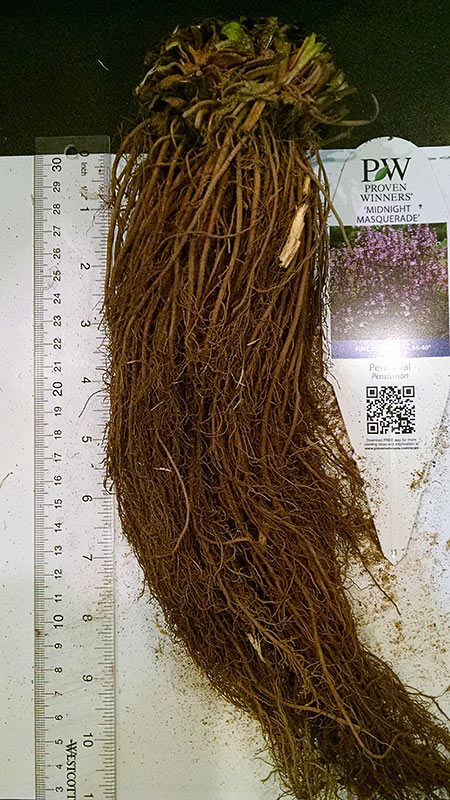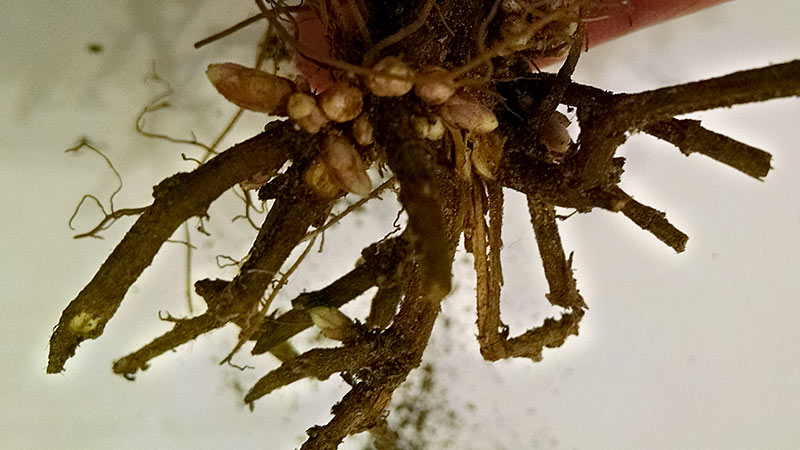When I began gardening, I had many different fears of killing the plants I purchased. I did kill a handful each season. As I learned more about gardening, the seasonal number of untimely deaths in the garden declined. Fun Fact: I still kill a plant or two during a growing season. Always learning, right?
Fear of Harming Roots
My number one fear, and I’m still a tad anxious about it now, is harming the root structure of plants. When I first put the plant in the ground, or when I move the plant because I want it somewhere else, I worry about tearing and breaking important roots. I mean, those are a necessary part of the plant! So when I found out MSUE was having a Bare Root Plants class to accompany their Bare Root Plants Sale, I immediately signed up.
How are Bare Root Plants Different than Container-grown Plants?
Unlike container-grown plants, bare root plants are grown outside the greenhouse in fields. From the beginning their roots are closely acquainted with soil instead of container media. This allows the plant to grow strong, healthy roots without being restricted by the size of a container.

The field grown plants are also already acclimated to the growing cycle (seasonal weather and temps) in the area. The autumn before being sold, the plants are lifted from the ground, the soil shaken off, and the plant carefully put into sawdust and cold storage. In the spring, there is no fear of frost nipping lush greenhouse-grown leaves. Bare root plants are naturally waking from dormancy.

Why Go Bare Root?
Beyond healthy plants with a leg up on getting a good establishment in your garden, bare root plants are:
- Sustainable
- Contain Little Extra Packaging
- Earth Friendly
- More Affordable, Saving a Gardener $$$ (Unless you are like this gardener and buy more plants with the $$$ you saved.)
How to Plant Bare Root Plants
- Soak Roots: When you receive your plant, if the roots are dry at all they can be soaked overnight. If the plant is left longer in the water, there is a point where it will begin to rot.
- Prepare Site: Loosen a broad, shallow area of soil where the plant will be placed. The plant roots will grow laterally as well as downward.
- Situate Roots: Place the plant in the prepared area, fanning out the roots. Some plants’ roots will naturally have held the shape they were growing in the field. Follow what you can observe from the plant instead of fighting it.
- Correct Depth: When the plant is brought out of storage, it will begin to bud. Make sure the buds set at soil level or slightly above as the plant will settle over time.
- Water: Water the plant in well. This will help the soil settle in around the roots.
- Mulch: Consider mulching around the plant to stop weed seed germination, retain moisture, and provide a buffer for the roots.
Post Planting Tasks for Bare Root Plants
Any plant placed in a garden will need some aid during its first season or two. It has a lot to do when becoming established. To help a plant along, you could give it a slow release fertilizer. The “slow release” is important as it makes nutrients available to the plant in gradual doses. Five to six months is good. Reading the label on the fertilizer package will help you identify a fertilizer with these traits.
If the plant immediately leafs out and Spring weather is still chilly, consider a liquid feed for the plant. Cool soil inhibits nitrogen uptake from soil to plant.
How Do Bare Root Plants Perform?
Planting, potting up, or healing in bare root plants soon after you bring them home is important. Leaving them in any plastic bag they were shipped in could cause mold as the plant respirates and moisture collects in the bag. Leaving them out could cause the roots to dry out.
If taken care of an planted correctly, our instructor said we can expect most of the plants to Sleep their first season, Creep their second season, and Leap their third.
Bare Roots for The Lot
Here are the bare root plants I selected for The Lot this season:
- ‘Black Gamecock’ Louisiana Iris
- ‘Midnight Masquerade’ Penstemon
- ‘Lavender Bubbles’ Allium
- ‘Purple Illusion’ Veronica
- ‘Cat’s Pajamas’ Nepeta